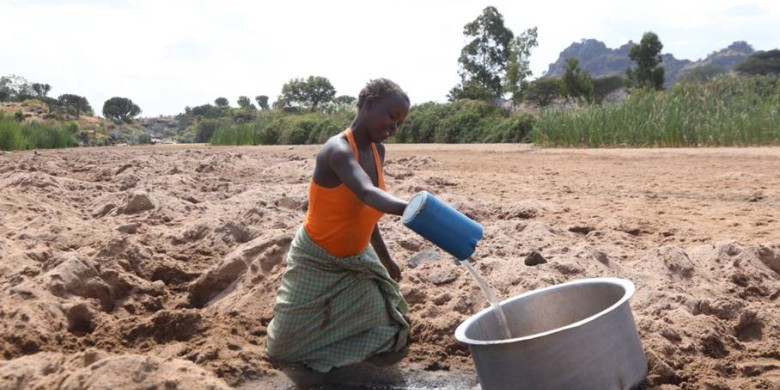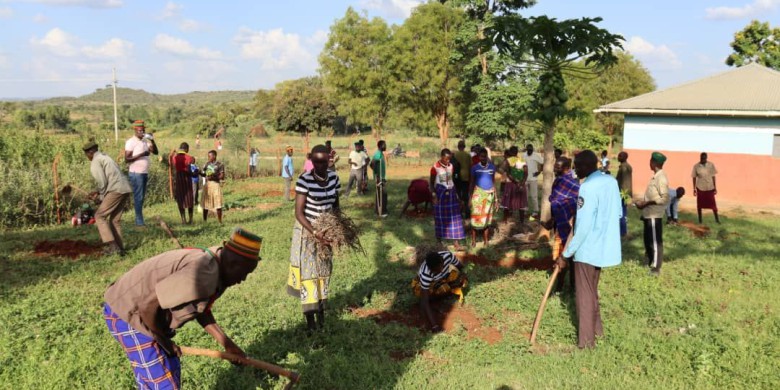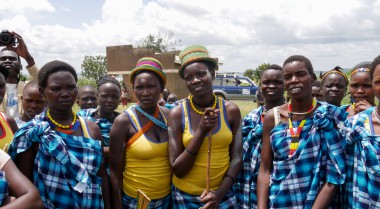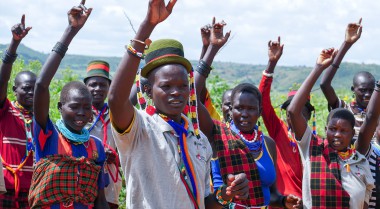
How to promote conflict-sensitive climate action?
Let us take you to Kaabong, in the sub-region of Karamoja, an 11-hour car ride from the bustling capital city of Kampala, Uganda, to the country's northeast. This semi-arid borderland situated between South Sudan and Kenya is hot and dry. The people living in Kaabong are traditionally pastoralists keeping big herds of cattle. Due to the dry and hot climate, they embrace a nomadic lifestyle, travelling long distances in search of water and pasture for their animals. Life is an eternal dance with nature rooted in indigenous knowledge and beliefs. Yet, their nomadic tradition has borne a dark consequence – armed conflicts between different groups spilling across the border. These conflicts result from competition over consistently diminishing access to food, water and other means of livelihood in the region. Without adequate mitigation and adaptation mechanisms, the situation will likely continue affecting millions of people in Uganda, Kenya, and South Sudan.
Droughts increase competition over scarce resources
In Kaabong, the impact of climate change is worsening armed cattle raids. Frequent droughts and heat waves lead to increased water scarcity, which is felt not only in Kaabong but also in the neighbouring countries of Kenya and South Sudan. After all, water scarcity knows no borders. As the Vice Chairperson of Local Council 5, Kaabong District Local Government, explains: "With the kind of cattle raiding we have, even cows have failed to multiply. One day, a cow is in Kaabong; the next day, it is stolen and taken to Kenya. Then, it is raided and taken to South Sudan the next day, stressing our cows very much."
The lack of water forces pastoralists to move across the border into Uganda, resulting in competition over the already limited resources and increasing tensions among the various ethnic groups. Communities are forced to cut down thousands of trees to fence off households and burn bushes around them to clear their sight as a safety measure to increase visibility and spot potential attackers. On the most local level, this challenging reality creates an opportunity for conflict-sensitive adaptive climate action to take root amidst communities.

Local peacebuilders lead the way to conflict-sensitive climate action
Local peacebuilders like Marion Akiteng and Patrick Bwire from CECORE Uganda started to lead the development and strengthening of conflict-sensitive adaptive capacities in local communities. Their approach is grounded in collaboration, bringing together a tapestry of diverse voices, each impacted by climate change in distinct ways.
Marion and Patrick conducted a localised climate security risk assessment in Kaabong, Karamoja, seeking concrete solutions for conflict-sensitive climate action rooted in local communities' valuable insight and expertise. For this, they invited local government representatives, religious and traditional leaders, diverse youth and women, and many more to share stories and observations in their local languages on how specific security risks affect their community and the role climate change plays in those risks. It did not come as a surprise that many told stories about cattle raiding and more and more people moving into Kaabong and the resulting competition over resources, especially water.
"We, the community members, need to be involved in finding solutions because we are the ones who feel the pinch of insecurity and climate change. We know better how it pains and how to respond to drought in our community. We have to collect water miles away. We are also the primary victims of insecurity whenever there are armed cattle rustling," a woman shared.
This exchange gave local communities confidence because they were empowered to build on their own local and indigenous knowledge and practices, addressing the interlinkage between climate and conflict. Consequently, they passionately started to increase awareness towards other community members, local leaders and policymakers about climate-related security risks directly affecting them. Eager to drive change, they leveraged innovative platforms like radio talk shows, door-to-door sensitisation campaigns, and community forums to ignite discussions about conflict-sensitive climate action.
"During the community dialogues, community members were able to identify and discuss community-owned and context-specific solutions to address the climate change and conflict nexus issues. We realised we have innovative and easily adaptable practices such as propagation of indigenous and drought-resistant tree species that withstand our dry areas," - shared Logwe Jujan, a member of a voluntary Kaabong District Climate Change Action Committee that was established under the project.
Unsurprisingly, these dialogues and awareness-raising campaigns led to various adaptation strategies implemented in subsequent actions. Communities learned about "live fences" and started to plant drought-resistant indigenous trees to protect their property. These trees include acacia, neem and kay-apple, among others. Several of these species possess thorns that serve as a deterrent against burglary and looting while simultaneously protecting property. Instead of resorting to cutting trees for home protection, local communities now grow trees that act as natural safeguards. An additional benefit is that these trees are a source of food and can help alleviate food insecurity.

Sustainable impact of conflict-sensitive climate action
Marion and Patrick have always supported the community in making their own decisions and shaping their own strategies and measures to address local climate-related insecurities. Localised approaches are more sustainable and environmentally friendly as they reduce the demand for wood and promote biodiversity, contributing to environmental sustainability and ecological preservation.
In recognition of the critical interlinkage between climate and conflict and looking ahead, Meri Gino, LC 5 Chairman- Kaabong District Local Government, shared, "One of the key causes of conflict is related to climate. Our neighbouring communities, the Turkana across the border in Kenya, have not had good rainfall for many months and have kept crossing over to graze in Kaabong. So, the awareness should go beyond just Kaabong. Therefore, we as a district need to support more collaboration to reach out to more communities with a message of peace and addressing climate change."
As we delve deeper into what conflict-sensitive climate action looks like, what is happening in Kaabong highlights the power of locally-owned initiatives in the face of global climate crises. In this corner of the world, locally-owned resilience thrives, and the seeds of change are sown, one indigenous tree at a time.

